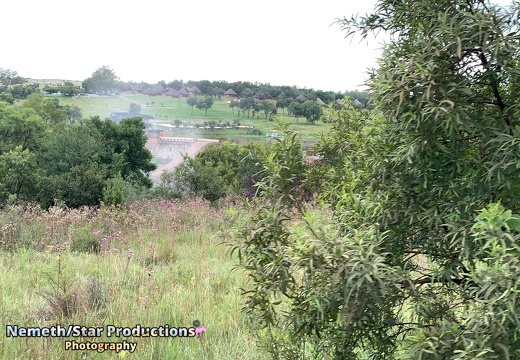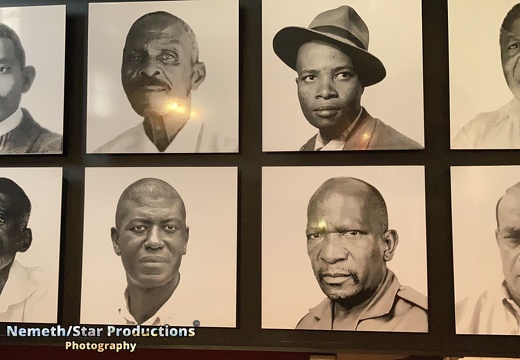
EP01 - #RightNow Johannesburg: Constitution Hill - Ghandi & Mandela
The Old Fort prison was later extended to include "native" cells, called Section 4 and Section 5, and, in 1907, a women's section was added, the Women's Gaol. An awaiting-trial block was constructed in the 1920s. Both political activists opposed to apartheid and common criminals were held at the prison, and striking white mineworkers in 1907, 1913 and 1922. During the apartheid era the prison complex became a detention centre for political dissidents opposed to apartheid, striking white mineworkers (in 1907, 1913 and 1922), those deemed "anti-establishment" and those who simply violated the pass laws of the time. Mahatma Gandhi was imprisoned here in 1906. Nelson Mandela, Joe Slovo, Bram Fischer, Albert Lutuli and Robert Sobukwe are some of its famous prisoners. For this reason it was also called ''The Robben Island of Johannesburg'' due to how infamous it became as a result of holding these political prisoners. The site housed prisoners until 1983, when it was closed.
Activists were usually held as awaiting trial prisoners and then sent off to Robben Island or Pretoria to serve jail terms. Brewing beer – an illegal activity if you were black – also landed many women in jail, a situation depicted in the Women Gaol. Still others were arrested for having sex across the colour bar or for homosexual sex. Amongst the practices reported during detention, the humiliating "Tauza" dance, the beatings in the notorious Number Four prison for black men, the detention for months in dirty, overcrowded conditions in the Awaiting Trial Block, or being stripped of their underclothes and their dignity in the Women's Gaol.
The Old Fort was declared a National Monument in 1964 although it continued as a functioning prison until 1987, after which the buildings and the site as a whole suffered from neglect and vandalism. Constitution Hill opened its doors as a museum in 2004, with tours taking the visitors to three prison museums: Number Four, the Women's Gaol and the Old Fort. The site also features the Constitutional Court and the court's collection of 200 South African artworks.
Text: Wikipedia
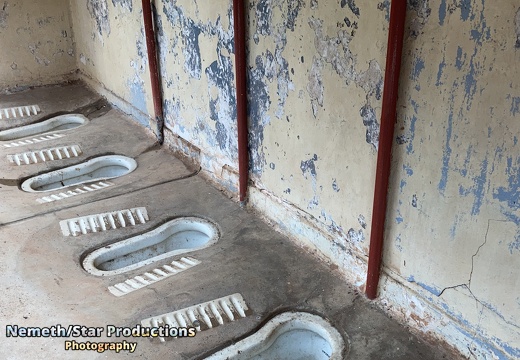
EP02 - #RightNow Johannesburg: Constitution Hill - Prison
Every Sunday, prison officials carried out inspections of the communal cells in Number Four. The blanket sculptures in this cell - flowers, couches, stools and tanks - are typical of the objects that priseners made for these Sunday parades. Prisoners with the most creatively decorated cell would win privileges for a week, such as cake or an extra slice of bread each day.
The blanket sculptures were also made as a way of pleasing the cell bosses. Blanket couches were offered to them as a form of comfort during the day. Blankets were also used for recreation. They were used as boards for games with toilet paper markers and lines drawn with soap. Prisoners also passed the time by carving soap with spoons or small pieces of wood from trees. They created paper mache sculptures by shredding pieces of paper and mixing them with soft sop-sop (blue soap mixed with water).
The blanket sculptures and soap carvings in this ceil were created by two ex-prisoners, Isaac Luphindo and Vusi Tshabalala, for this exhibition. During the process, these ex-prisoners reflected on the meaning of these elaborate creations: "These things remind us of the world outside the prison walls, the life we left behind and the things we long for,"
Text: Constitution Hill Museum
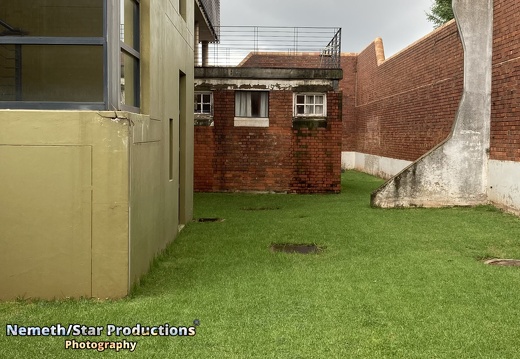
EP03 - #RightNow Johannesburg: Constitution Hill - Women's Jail
The paintings that you see enlarged on the walls of this courtyard were done by Fatima Meer while she was in detention in the Women's Jail for six months in 1976 on charges of terrorism.
Fatima was given the paints by a close friend and comrade, Nana Weinberg, who frequently visited her in the Jail.
Prisoners were not allowed to paint any images of the Jail and Fatima did these in secret. One day, Fatima was called to meet the Superintendent of the Jail. Fatima recorded the following conversation with the Superintendent.
"I have a report that you have been making sketches of the prison.
You know that is against the rules, 'said the Superintendent.
'Sketches of the prison!' I feigned surprise.
' We are locked in our yards. How can I sketch the prison?'
'I thought as much,' she said, to my relief.
'i have been painting flowers and makind cards. You have seen these. They go through your office.'
'i know,' she said.
' The vagaash (black wardress) must have been mistaken.'
I thanked my lucky stars. Just yesterday I rolled up the sketches and hid them under my underwear and discreetly passed them on to our lawyer during consultation. Winnie had taken charge of the remaining paintings and had smuggled them out through a vagaash."
This large cell held up to seventy sentenced prisoners. Most women were here for criminal offences, but some sentenced political prisoners were also kept in these cells. The wardresses would use long-term sentenced prisoners to keep order in the cell. These cell bosses would use their power to extract favours from other prisoners.
"Sis Gugu was a boss. She was fat like a man. She was in control. She would take your food. Sometimes she told you to take off her overalls. And then you had to wash it for her. You were her baby. If she didn't like you, you would scrub without soap. Even the matron would see and say nothing."
Nomsa Mthethwa, pass offender, 1976 and 1977
"I am a Zulu and not used to silly things. I used to hate snangananga (lesbian sex). Sometimes someone would ask you to wash a vest for her and you would do it innocently. In the meantime she would be going around telling people that you were her girlfriend and that would lead to a fight."
Assienah Mnisi, prisoner, 1973
"I am crying now because I am sad and sorry and angry when I think about the suffering inside these cells. There were bullies who wanted to force you to become angry and do something that increased your sentence, especially if you were about to be released. We used to hide our prison cards so that others didn't know the duration of our sentence."
Bella Dlamini, prisoner, 1973
"The only time we had peace of mind was during the night and between one and two o'clock in the afternoon when we were always locked up in our cells as the warders went for lunch. This hour seemed like a week away from the swearing and the insults one heard each hour of the day from the warders and from the Iong-term Prisoners. The daily language was so foul that I felt sick of the Place."
Maggie Resha, Political Prisoner, 1959
"This was the devil's place and sometimes we would hear the prisoners screaming because of the beatings that were taking place,"
Daphne Kunene, trespasser, 1976
Text: Constitution Hill Museum
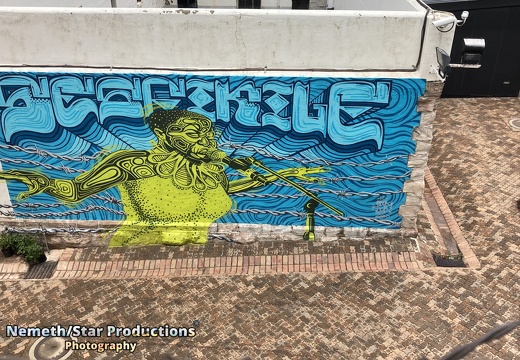
EP04 - #RightNow Johannesburg: Constitution Hill - The old Fort
The Old Fort prison buildings were built from 1896 to 1899. They were created by the Boers for the specific purpose of holding captive British invaders. During the Anglo-Boer War, however, the British seized Johannesburg and converted the Old Fort prison buildings for the incarceration of Boers, some of whom were executed there. Even prominent Boer leaders of the Anglo-Boer War were imprisoned here by the British soon after the British had succeeded in seizing and controlling Johannesburg.
Under the apartheid government, only whites were held in the Old Fort prison buildings, except for Nelson Mandela, he was kept there after the government received a tip-off regarding an escape attempt. Mandela was given a bed in the hospital section as an awaiting-trial prisoner in 1962 prior to the Rivonia Trial.
In the old prison blocks visitors can learn more about South Africa's difficult path towards freedom and democracy from the permanent museum exhibitions that include personal testimonies from former prisoners and warders and installations.
Text: Wikipedia
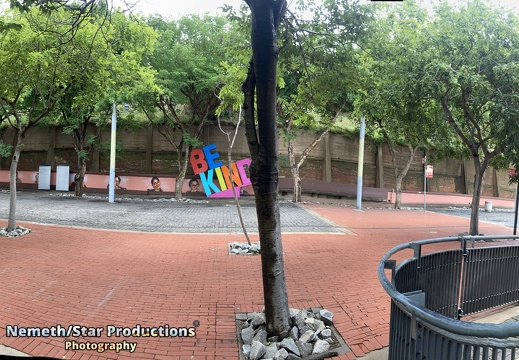
EP05 - #RightNow Johannesburg: Constitution Hill - Flame of Democracy
On 10 December 2011, the Flame of Democracy was ignited celebrating the 15th anniversary of the signing of the South African Constitution
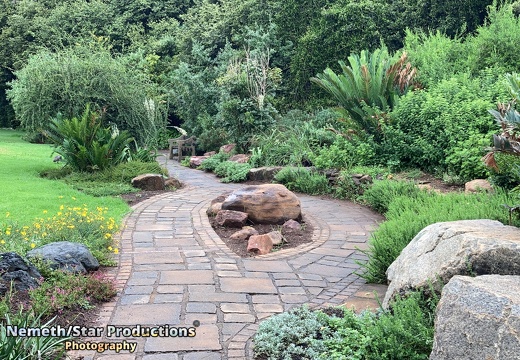
EP06 - #RightNow Roodepoort: Walter-Sisulu-Botanical-Garden
The Walter Sisulu National Botanical Garden (previously known as the Witwatersrand National Botanical Garden) is a 300 hectares (3.0 km2) botanical reserve in Roodepoort near Johannesburg. The waterfall and the hiking trail upwards are the most famous attractions of the garden. Formally established in 1982, it is one of the youngest of South Africa's National Botanical Gardens, but the site where it is located has been popular with visitors for many decades before that. The garden is home to a well known pair of Verreaux's eagles that nest in the Roodekrans ridge which intersects the reserve. The garden has a restaurant, gift shop and nursery which sells South African native plants (the nursery closed March 2015). The Garden has been recognised as one of the most beautiful botanical gardens in the world.
Text: Wikipedia
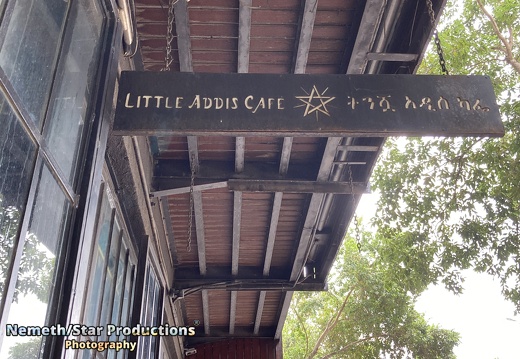
EP07 - #RightNow Johannesburg: Maboneng
We return to Maboneng, the part of Johannesburgs CBD that is the scene for a new group of emerging creatives in the city. We meet Mike one artist who presents his arts under the handle @cheartafrikah on Instagram. Our walk through Maboneng continues as we see the latest street paintings and definitely some in which you could sink in a portrait photo. We finish our walk with an art at the skyline and an traditional Ethiopian coffee at Little Addis in Maboneng.
Follow the artists of Maboneng @cheartafrikah on Instagram.
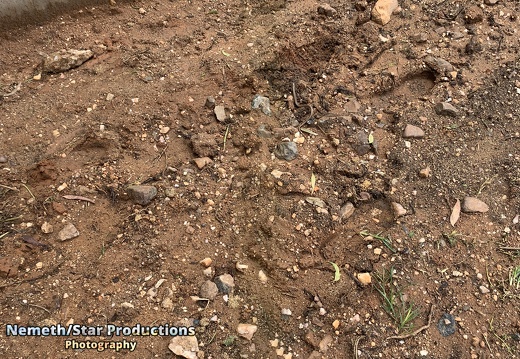
EP08 - #RightNow Cradle of Humankind: Hiking
We are hiking around the Cradle Moon Lake which is part of the Crocodile River. The Crocodile River has its source in the Witwatersrand mountain range, originating in Constantia Kloof, Roodepoort, Gauteng province. The first dam it fills is the Lake Heritage Dam just west of the Lanseria Airport. The Crocodile River is one of the most pressured river systems in South Africa. The effects of pollution from two of South Africa’s metropolitan areas, Johannesburg and Tshwane, has been detrimental to the ecology of the system. Untreated industrial, mining, agricultural and household waste has deteriorated the water quality throughout most of its course and led to massive algal blooms in the Hartbeespoort Dam and Roodekoppies Dam. Invasive plant species have negatively affected the integrity of the system. Unsustainable farming practices have led to sediment overloads and erosion further harming the river. Text: Wikipedia. The hiking trail is shared with a mountain bike trail. Three hiking trails on different length exists - a 5km, 16km and 25km trail. We are on the 5km trail but will see the longest 25km trail in one of the coming episodes of #RightNow as well. Apes are crossing our way as well as cattle. At the end of our hike we meet a baby snake that crosses almost unnoticed the trail, which has been softened by the rain.
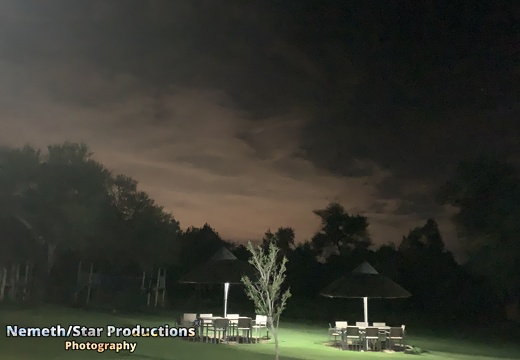
EP09 - #RightNow Cradle of Humankind: Moon Lake
The Cradle Moon Lake Game Resort is located 25km outside of Johannesburg in the direction of Muldersdrift. In the middle of nowhere you can stay in a traditional styled bungalow and the wildlife knocks on your door. The area is great for hiking and swimming in the Cradle Moon Lake.
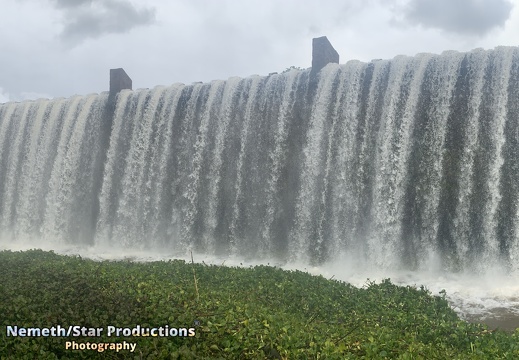
EP11 - #RightNow Cradle of Humankind: Waterfall, Zebras & Apes
Our last episode from the Cradle on Humankind focuses on the great Waterfall, the Zebras on the hiking trails and apes who visited us in our rooms. Enjoy this two part ride and many exclusive content videos.
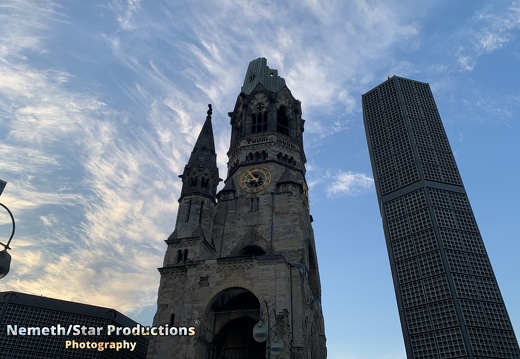
EP12 - #RightNow Berlin: Gedächtniskirche, Zoopalast, Breitscheidplatz
We are back where we started. 3 years ago this wonderful Picture show #RightNow was born and finally we are back at the place where everything begun. Welcome back to Berlin!!! With 2 fresh episodes that are the 107th and 108th episode of #RightNow. To celebrate this special event we will publish these episodes also in our Twitter Fleets and Instagram Story.
Our first destination is located in the heart of Berlin. The world famous Kaiser-Wilhelm-Gedächtniskirche with the Zoopalast (Zoo palace) at the Breitscheidplatz.
Zoo Palast is a cinema in the western center of Berlin in the Charlottenburg district. The cinema in Hardenbergstraße currently belongs to Premium Entertainment GmbH. The business was rebuilt and reopened on November 27, 2013. The exhibition halls at the zoo, where the first Berlin Six-Day Race was held in 1909, previously stood on the same site. A cinema was subsequently built there, where films were shown as early as 1915 and which was originally called the “Palasttheater am Zoo”. In 1925, the Palasttheater am Zoo was taken over by UFA and remodeled. A majority of German film works premiered here, e.g. Metropolis in 1927. The cinema had its own orchestra, ballet and cinema organ. During the National Socialist era, the Palasttheater am Zoo was to be extensively rebuilt according to plans by Albert Speer; however, these renovations never took place. During World War II, the Palasttheater am Zoo was almost completely destroyed in an air raid in 1943 and finally demolished in 1955. Today’s Zoo Palast was built in 1956/1957 according to plans by architects Paul Schwebes, Hans Schoszberger and Gerhard Fritsche and opened on May 28, 1957. he world famous Kaiser-Wilhelm-Gedächtniskirche with the Zoopalast (Zoo palace) at the Breitscheidplatz.
Breitscheidplatz experienced its darkest day on the evening of December 19, 2016, when an Islamist terrorist drove a tractor-trailer into a crowd of people at the Christmas market. As a result, 12 people died and 55 were injured. The names of the victims are engraved on the steps in front of the Memorial Church. Today, access to the square is protected by heightened stone bollards.
The Lutheran Kaiser Wilhelm Memorial Church is a monument on Breitscheidplatz in the Charlottenburg district of Berlin. It was commissioned by Emperor Wilhelm II to commemorate his grandfather, Emperor Wilhelm I, and built between 1891-1895 by Franz Schwechten in the neo-Romanesque style. Its steeple, at 113 meters, was the tallest in the city at the time. During World War II, the Memorial Church was severely damaged in 1943. After a dispute over reconstruction, agreement was reached to demolish the nave, preserve the 71-meter-high ruined tower as a memorial against the war, and build a new four-part ensemble of buildings. This was built in 1959-1963 by Egon Eiermann in the modernist style and consists of the nave, the steeple, the chapel and the foyer. The Kaiser Wilhelm Memorial Church is one of the most famous landmarks of Berlin’s West and the most popular sights of the German capital. The ruined tower has housed a memorial hall since 1987.
Breitscheidplatz is located in the Charlottenburg district of Berlin (Charlottenburg-Wilmersdorf district) between Kurfürstendamm, Budapester Straße and Tauentzienstraße. It is a central square in the City West. It is one of the most famous squares in Berlin, not least because of the war ruins of the Kaiser Wilhelm Memorial Church, which have been preserved as a memorial.
Quelle: Wikipedia
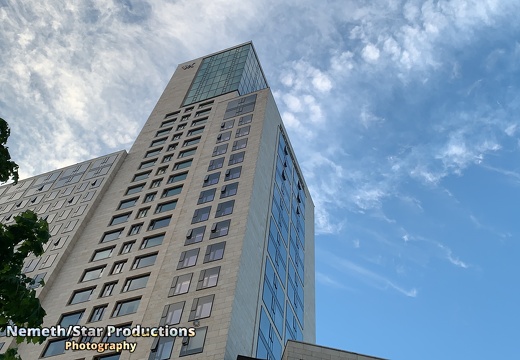
EP13 - #RightNow Berlin: Ku’damm
The Kurfürstendamm (colloquially Ku’damm) is one of the most famous avenues in Berlin. The street takes its name from the former Kurfürsten (prince-electors) of Brandenburg. The broad, long boulevard can be considered the Champs-Élysées of Berlin and is lined with shops, houses, hotels and restaurants. In particular, many fashion designers have their shops there, as well as several car manufacturers’ show rooms. The avenue includes four lines of plane trees and runs for 3.5 km (2.2 mi) through the city. It branches off from the Breitscheidplatz, where the ruins of the Kaiser Wilhelm Memorial Church stand, and leads southwestward up to the district of Grunewald. Although the exact date of the building is unknown, an unnamed causeway leading from the Stadtschloss through the swampy area between the settlements of Charlottenburg (then called Lietzow) and Wilmersdorf to Grunewald is already depicted in a 1685 map. The name Churfürsten Damm was first mentioned between 1767 and 1787. From 1875 the former bridlepath was embellished as a boulevard with a breadth of 53 m (174 ft) on the personal initiative of chancellor Otto von Bismarck, who also proposed the building of the Grunewald mansions colony at its western end. In 1913 the new Marmorhaus cinema opened. A number of major film premieres were held here during the silent era. Especially during the “Golden Twenties” the Kurfürstendamm area of the “New West” was a centre of leisure and nightlife in Berlin, an era that ended with the Great Depression and the Nazi Machtergreifung in 1933. The shops and businesses owned by Jewish tradespeople became the target of several pogroms, culminating in the “Reichskristallnacht” of 9 November 1938.
After German reunification the Kurfürstendamm had to compete with central places like Potsdamer Platz, Friedrichstraße, and Alexanderplatz, which led to the closing of numerous cafés and cinemas. It retained the character of a flâneur and upscale shopping street as the western continuation of the Tauentzienstraße with its large department stores.
Quelle: Wikipedia
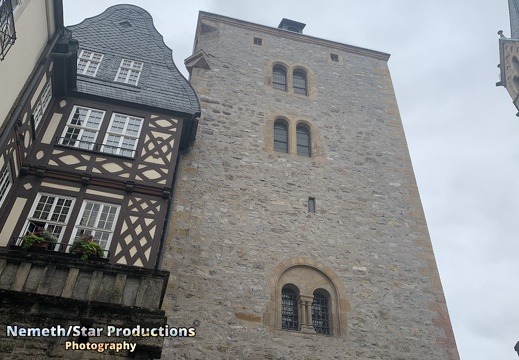
EP14 - #RightNow Eisenach: Nikolaikirche and Nikolaitor
Welcome to Eisenach, a town in Thuringia, Germany with 42,000 inhabitants. It is the main urban centre of western Thuringia and bordering northeastern Hessian regions, situated near the former Inner German border. Eisenach was an early capital of Thuringia in the 12th and 13th centuries. In 1685, Johann Sebastian Bach was born here.
The Lutheran St. Nicholas’ Church located on the Karlsplatz, served the Benedictine convent once located in the area. This triple-naved basilica was built in 1180. It is considered the latest example of Romanesque architecture in Thuringia.
Quelle: Wikipedia
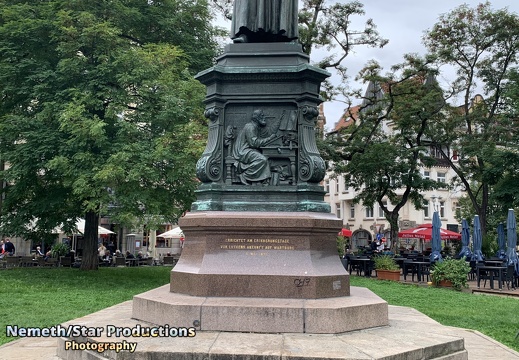
EP15 - #RightNow Eisenach: Luther monument
The Martin Luther monument at Karlsplatz was designed by Adolf von Donndorf and was dedicated on 4 May 1895 on the 374th anniversary of Luther’s arrival at Wartburg castle. The more-than-life-size statue of Martin Luther on a pedestal also has reliefs depicting events of his life leading up to and including his stay in Eisenach as well as the title of one of his most famous hymns, “Ein feste Burg ist unser Gott” (“A Mighty Fortress Is Our God”).
Quelle: Wikipedia
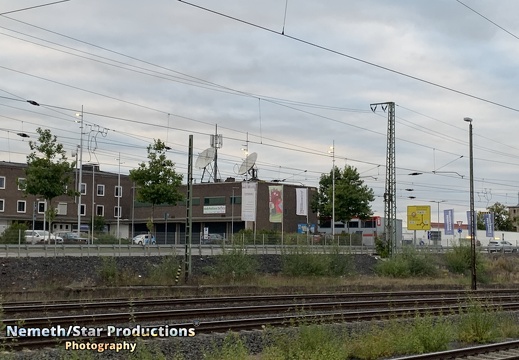
EP16 - #RightNow Bebra Bahnhof
**Bebra** is a small town in Hersfeld-Rotenburg district in northeastern Hesse, Germany.The name Bebra came from Biberaho (“Village on the Beaver River”; Biber still means “beaver” in German today. Later this became first Bibera, and then today’s name Bebra. The town is easy to find on most maps thanks to its prominent location on the Fuldaknie (“Fulda Knee”). Ranges surrounding the town are the Stölzinger Gebirge (range) in the north, the Richelsdorf Hills in the east, the Seulingswald in the southeast and the Knüllin the southwest. An upswing came Bebra’s way when the railway network in Germany was expanded, reaching even this region by the mid 19th century. Towards the end of the century, the town was one of Germany’s most important railway junctions. Bebra is a classic railway town at a junction of the Bebra–Fulda, Bebra–Göttingen, Thuringian and Bebra–Kassel lines. Its station, besides a passenger station, includes a marshalling yard, making reaching the town by rail problem-free. The town belongs to the Nordhessischer Verkehrsverbund (“North Hesse Transport Association”, NVV). As a stop on the InterCityExpress east–west line, it has connections to the Ruhr area, Leipzig, Dresden and Berlin.
Quelle: Wikipedia
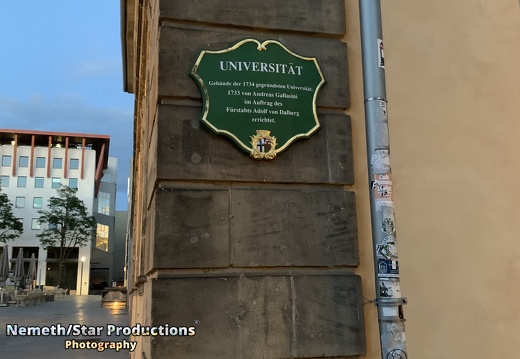
EP17 - #RightNow Fulda: City
Fulda, historically in English called Fuld, is a town in Hesse, Germany; it is located on the river Fulda and is the administrative seat of the Fulda district. Fulda station is a transport hub and interchange point between local and long-distance traffic of the German railway network, and is classified by Deutsche Bahn as a category 2 station. The Old City Hall and the old university building and University Plaza are three highlights of the city. The University of Fulda (also: Alma mater Adolphiana), was founded in 1734 by Adolphus von Dalberg and existed until 1805. Most of the students and professors were Catholic. Under Prince-Bishop Heinrich von Bibra Protestants were also admitted; from 1777, with the sole exception of the theological faculty, a Protestant could acquire a degree in any faculty of the university. Quelle: Wikipedia
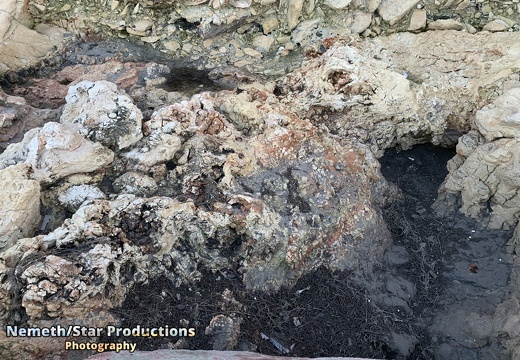
EP18 - #RightNow Malta - Sliema: Along Tower Road Beach
For the final episodes of the Season we traveled to Malta to give a awesome view of one of the most beautiful islands in southern Europe. Today enjoy Sliema.
Sliema is a town located on the northeast coast of Malta in the Northern Harbour District. It is a major residential and commercial area and a centre for shopping, bars, dining, and café life. It is also the most densely populated town on the island. Lining the coastline is a promenade known as the Sliema Front that has become the ideal spot for joggers and walkers as well as a prolific meeting place for locals during the summer season. Romantic moon strolls, barbeques and open air restaurants and cafes have made Sliema the hub of social nightlife. Sliema is also known for its numerous rocky beaches, water sports and hotels. Sliema, which means ‘peace, comfort’, was once a quiet fishing village on the peninsula across Marsamxett Harbour from Valletta and has views of the capital city. The population began to grow in 1853 and the town was declared a parish in 1878. Now Sliema and the coastline up to neighbouring St. Julian’s constitutes Malta’s main coastal resort.
Sliema has been the site of intensive development in recent decades. The Victorian houses that lined Tower Road have all been replaced by apartment buildings built in modern architectural style. Several of these have views of the Mediterranean Sea or Valletta but their development has been controversial. The promenade has been upgraded in the late 1990s and is a common spot for leisurely walking, particularly on warm summer nights when it remains crowded into the early hours of the morning. Shopping is primarily centred in an area called the Ferries (the Strand or ix-Xatt, Tower Road and Bisazza Street) and the more recently opened Tigne Point shopping mall. Restaurants and cafes can be found along the promenade. The prevalence of use amongst Sliema residents of English as a first language is decreasing although remains significantly higher than other localities on the island. Code-switching in English sentences with peppered Maltese words and phrases is relatively common in Sliema, as well as St. Julian’s, Pembroke, Swieqi, Madliena, San Ġwann and Kappara, although there are several individuals who speak exclusively in English or Maltese without mixing the two (see Maltenglish).
The population of Sliema is over 20,000 and has a significant turnover of foreign expatriates who reside temporarily. The town was the residence of the late Giorgio Borġ Olivier, former prime minister and architect of Malta’s independence and the temporary residence of Manwel Dimech who was one of Malta’s foremost revolutionary thinkers at the turn of the 20th century. He died in exile in Egypt and Lower Prince of Wales Road was renamed in his honour. Tas-Sliema is also the hometown of footballer Michael Mifsud and music artist Ira Losco.
Due to the iGaming industry’s introduction in Malta, Sliema has also seen a huge influx of foreigners, primarily from Scandinavia.
The town has a considerable number of streets connected with the British era in Malta, such as Norfolk Street, Amery Street, Windsor Terrace, Graham Street, Milner Street and Fort Cambridge.
Quelle: Wikipedia
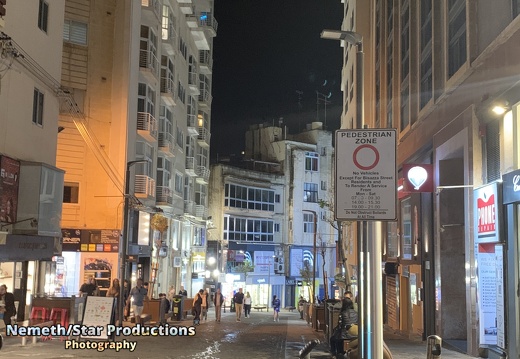
EP19 - #RightNow Malta: Sliema at night
A look to the Mediterranean Sea and Sliema in the night
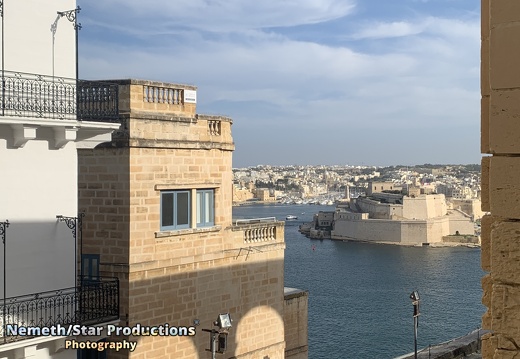
EP20 - #RightNow Malta: Valletta - Upper Barrakka Gardens (II-Barrakka-ta'Fuq)
The Upper Barrakka Gardens (Maltese: Il-Barrakka ta’ Fuq) are a public garden in Valletta, Malta. Along with the Lower Barrakka Gardens in the same city, they offer a panoramic view of the Grand Harbour. The gardens are located on the upper tier of St. Peter & Paul Bastion, which was built in the 1560s. The bastion’s lower tier contains the Saluting Battery. The garden’s terraced arches were built in 1661 by the Italian knight Fra Flaminio Balbiani. They were originally roofed, but the ceiling was removed following the Rising of the Priests in 1775. The gardens were originally used to offer recreation to the knights of the Italian langue of the Order of Saint John, but were opened to the public following the end of the French occupation of Malta in 1800. In the park there are several monuments and memorials to a number of prominent people, including Gerald Strickland, Sir Thomas Maitland and Sir Winston Churchill. A replica of the statue Les Gavroches (The street boys) by the Maltese sculptor Antonio Sciortino is also located in the garden. The original is to be found in MUŻA.
It is the highest point of the city walls, and thus its bordering terrace offers a clear view over the Grand Harbour, the Three Cities, as well as over the shipyard and the lower-lying parts the capital.
The gardens are linked to Valletta’s ditch and the nearby Lascaris Wharf by the Barrakka Lift. The first lift on the site was built in 1905, but was closed in 1973 and dismantled in 1983. The lift can be seen in operation in the 1968 British adventure film, A Twist of Sand. A new lift was inaugurated on 15 December 2012
Quelle: Wikipedia
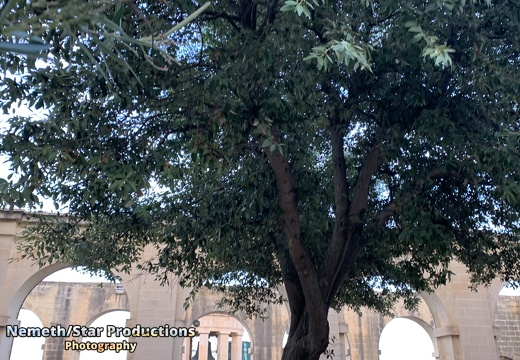
EP21 - #RightNow Malta: Valletta - Lower Barrakka Gardens
The Lower Barakka Gardens (Il-Barrakka t’Isfel) is a garden in Valletta, Malta, and it is twinned with the Upper Barrakka Gardens in the same city. The gardens offer a view of the Grand Harbour and the breakwater. It includes the Monument to Sir Alexander Ball, which is a prominent feature in the form of a neoclassical temple located at the centre of the garden. In addition, the terrace area features a number of commemorative plaques dedicated to, amongst others, the Hungarian revolution of 1956, the Prague spring, Giuseppe Garibaldi and the 50th anniversary of the European Union.
Quelle: Wikipedia
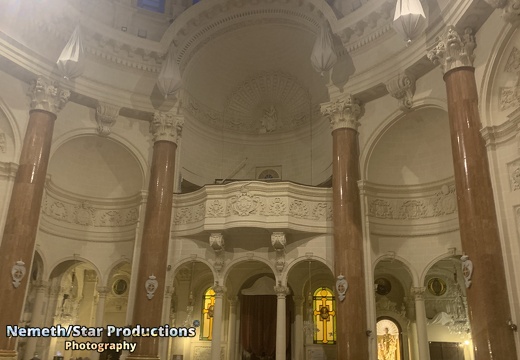
EP22 - #RightNow Malta: Valletta - Sanctuary Basilica of Our Lady of Mt. Carmel
Santwarju Bazilika tal-Madonna tal-Karmnu Sanctuary Basilica of Our Lady of Mt.Carmel
Quelle: Malta Heritage
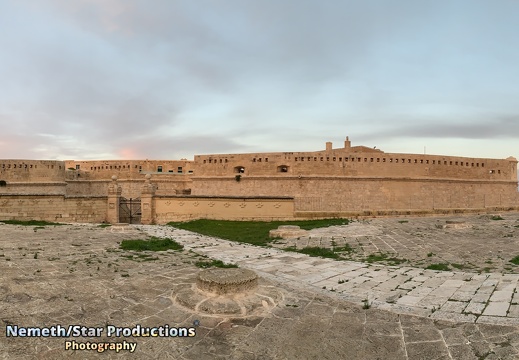
EP23 - #RightNow Malta: Valletta - Fort St. Elmo
Fort Saint Elmo (Maltese: Forti Sant’Iermu) is a star fort in Valletta, Malta. It stands on the seaward shore of the Sciberras Peninsula that divides Marsamxett Harbour from Grand Harbour, and commands the entrances to both harbours along with Fort Tigné and Fort Ricasoli. It is best known for its role in the Great Siege of Malta of 1565. By 1417, the local militia had already established a permanent watch post on the tip of the Sciberras Peninsula. In 1488, the Aragonese built a watchtower on Saint Elmo Point, and it was dedicated to Erasmus of Formia, better known as Saint Elmo. In 1565, the Ottomans invaded Malta once again with much more force than in 1551, in the Great Siege of Malta. Fort Saint Elmo was the scene of some of the most intense fighting of this siege, and it withstood massive bombardment from Turkish cannon deployed on Mount Sciberras that overlooked the fort and from batteries on the north arm of Marsamextt Harbour, the present site of Fort Tigné. After the siege, Grandmaster Jean Parisot de Valette decided to build a new city on the peninsula. Construction started in 1566, and Francesco Laparelli was sent by the Pope to design the fortifications. The ruined Fort Saint Elmo was rebuilt and integrated within the city walls. The fort was once again modified in the early 19th century by the British, when a musketry parapet was built. The World Monuments Fund placed the fort on its 2008 Watch List of the 100 Most Endangered Sites in the world because of its significant deterioration due to factors such as lack of maintenance and security, natural aging, and exposure to the elements. Since 2009 major restoration works began, and as of 2014 the restoration of Upper Saint Elmo and the Carafa enceinte was nearly complete.
Quelle: Wikipedia
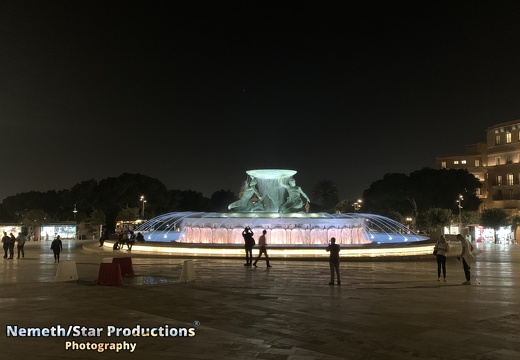
EP24 - #RightNow Malta: Valletta - Triton Fountain
The Tritons’ Fountain (Maltese: Il-Funtana tat-Tritoni) is a fountain located just outside the City Gate of Valletta, Malta. It consists of three bronze Tritons holding up a large basin, balanced on a concentric base built out of concrete and clad in travertine slabs. The fountain is one of Malta’s most important Modernist landmarks. Designed and constructed between 1952 and 1959 under no less than three governing bodies, and conceived jointly by eminent sculptor Chevalier Vincent Apap and his collaborator draughtsman Victor Anastasi, the fountain became unofficially operational on Saturday 16 May 1959. The sculptural group was repaired by Malta Drydocks engineers between January 1986 and April 1987. The fountain deteriorated in subsequent decades, until the bronze figures were dismantled and restored in 2017. Works were ready by the end of the year, and the fountain and piazza were officially inaugurated on 12 January 2018. The fountain consists of three bronze figures of mythological Tritons holding up a platter. Two of the Tritons are sitting, while the third one is kneeling, and they are balanced on a seaweed base. The face of each Triton is visible when viewed from City Gate. Their posture gives a sense of strength as well as spiral movement, which contribute to the monumentality of the fountain. The fountain was designed so as to avoid contrast with the nearby bastions, as well as to blend with the Victorian-era Kingsgate. The gate was demolished five years after the fountain was completed. The fountain was scheduled as a Grade 1 property by the Malta Environment and Planning Authority on 8 May 2012, as one of the “20th Century Modernist Architecture and Monuments in Valletta and Floriana”.
Quelle: Wikipedia
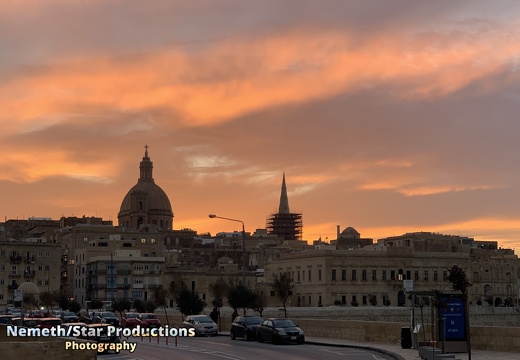
EP25 - #RightNow Malta: Valletta - sunset
A sunset in November in Valletta, capital of Malta
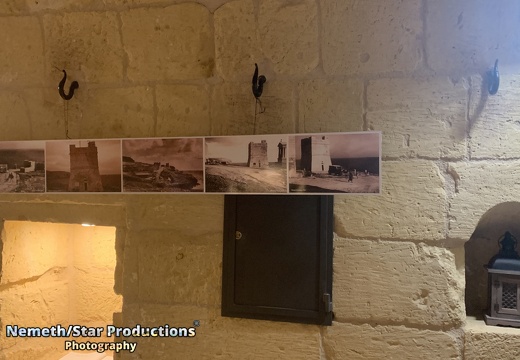
EP26 - #RightNow Malta: Ta'Xutu Tower
Sciuta Tower (Maltese: Torri ta’ Xuta), also known as Sciutu Tower (Maltese: Torri ta’ Xutu) or Wied iż-Żurrieq Tower (Maltese: Torri ta’ Wied iż-Żurrieq), is a small watchtower in Qrendi, Malta. It was completed in 1638 as the fifth of the Lascaris towers. The tower was restored by Din l-Art Ħelwa. After the British took over Malta in 1800, Sciutu Tower remained in use and was manned by the Royal Malta Fencible Regiment and later the Royal Malta Fencible Artillery. It was abandoned in 1873 but was manned by the Coast Police once again during World War II. The tower subsequently used as a police station until 2002. An original cannon dating back to the Order’s rule can still be found on the tower’s roof. In March 2013, Din l-Art Ħelwa was entrusted by the Government with the conservation of this tower for a period of 10 years. In September 2014, the tower and the surrounding area was cleaned of waste and debris by Din l-Art Ħelwa volunteers as well as the Qrendi Scouts. The tower underwent restoration conservation until 2016, and was inaugurated and opened to the public in 2019.
Quelle: Wikipedia










